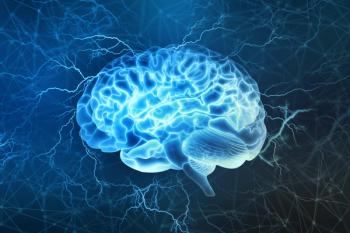
Your Voice
READERS' FORUM
Warning: Kava kava may cause liver damage
I read with delight the article by Drs. Gardiner and Kemper ("
Among the herbs the article lists for alleviating insomnia is kava kava. The authors mention a few problems associated with this herb, but it is important to point out that more than 30 cases of severe liver damage associated with the use of kava kava have now been reported in Germany and Switzerland, including one death and four cases of liver failure (Esher et al: BMJ 2001;322:139; Kraft et al: Dtsch Med Wochenschr 2001; Sept 7:126; Russman et al: Ann Intern Med 2001;135:68). As a direct result of these adverse reactions, authorities in Germany, Switzerland, France, and the United Kingdom have either banned or are considering banning kava kava. Canadian health officials are examining whether to consider similar action. The US Food and Drug Administration, aware of the problem, asked for additional information in a letter sent to health-care professionals on December 18, 2001. This FDA action was prompted by 58 reports of adverse reactions, including one case of liver disease that necessitated liver transplant.
In addition to liver problems, kava kava has long been associated with "kawaism" in some patients. This skin condition is characterized by dry, flaking, jaundiced skin and infected conjunctiva. Recently, kava kava has been reported to cause life-threatening parkinsonism. The American Herbal Products Association, a prominent herb industry trade group, recommended in 1997 that herbs containing kava kava be labeled "not to be used by people under 18 or by pregnant or nursing women without professional advice." Kava kava is also suspected of causing skeletal muscle relaxation that impairs motor control, in turn causing problems with driving a motor vehicle. In view of the serious toxicities associated with kava kava, I believe it should be excluded from use in pediatrics.
Gerald Ente, MD
Westbury, N.Y.
The authors reply: Since we prepared our article, there have been a growing number of reports linking kava kava (Piper methysticum) to hepatic damage. As Dr. Ente notes, the FDA is now warning of a possible link between kava kava and liver toxicity and is investigating the situation. Kava kava is widely used in the United States, not only to treat insomnia but for premenstrual syndrome and anxiety. Safety concerns arose when Germany and Switzerland reported approximately 30 cases of liver toxicity in patients using kava kava. The recent FDA letter to health-care professionals asks them to review their cases of liver toxicity to discern any link to dietary supplements containing kava kava. Adverse events can be reported to the FDA at 800-332-1088 or
Paula Gardiner, MD
Kathi J. Kemper, MD, MPH
Commission E vs. the FDA
I strongly object to Dr. Gardiner's and Dr. Kemper's characterization of the German Commission E as the equivalent of the FDA ("
Joseph J. Keeley, MD
Orlando, Fla.
The authors reply: The German Commission E is, like the FDA, a federally sponsored organization, and they are similar in their focus on consumer safety and product efficacy. However, the German Commission E evaluates herbs and the FDA reviews pharmaceuticals. In 1978, the German government appointed a committee comprising physicians, pharmacologists, toxicologists, and others to evaluate the safety and efficacy of herbal medicines by reviewing the scientific literature. The Commission E evaluated data obtained from clinical trials, field studies, and collections of single cases, and information from standard herbal reference works. Although the FDA rigorously evaluates pharmaceuticals, it does not review herbal efficacy in the same way because the 1994 Dietary Supplement Health and Education Act classifies herbs as dietary supplements.
Paula Gardiner, MD
Kathi J. Kemper, MD, MPH
Another approach to awakening at night
Dr. Kemper's advice for dealing with a young toddler who wakes up at night for a feeding ("
These children act as if they are unaware they have been asleep: One moment the treasured parent is holding or feeding them, the next instant the parent has vanisheda very disquieting experience, to say the least. The problem classically presents around 9 months of age (at which time the partial acquisition of object constancy exacerbates the problem). The principles hold true as well for the 16-month-old toddler described in the vignette.
The key, then, is to use the progressive approach described at the initial bedtime transition first. When an independent "settling/ falling asleep" has been established, the middle of the night awakening (if not already magically "cured") is much easier to extinguish.
Christopher Goff, MD
Old Saybrook, Conn.
Too much to touch on, so little time
Finally! After years of reading from ivory-tower based colleagues who have never done a day of private practice in their careers and who suggest all the things we need to incorporate into the 14.2 minutes that constitute an office visit, it was soothing to read Dr. Gephart's commentary (
Alan Levine, MD
Levittown, N.Y.
Readers' Forum. Contemporary Pediatrics 2002;5:153.
Newsletter
Access practical, evidence-based guidance to support better care for our youngest patients. Join our email list for the latest clinical updates.








